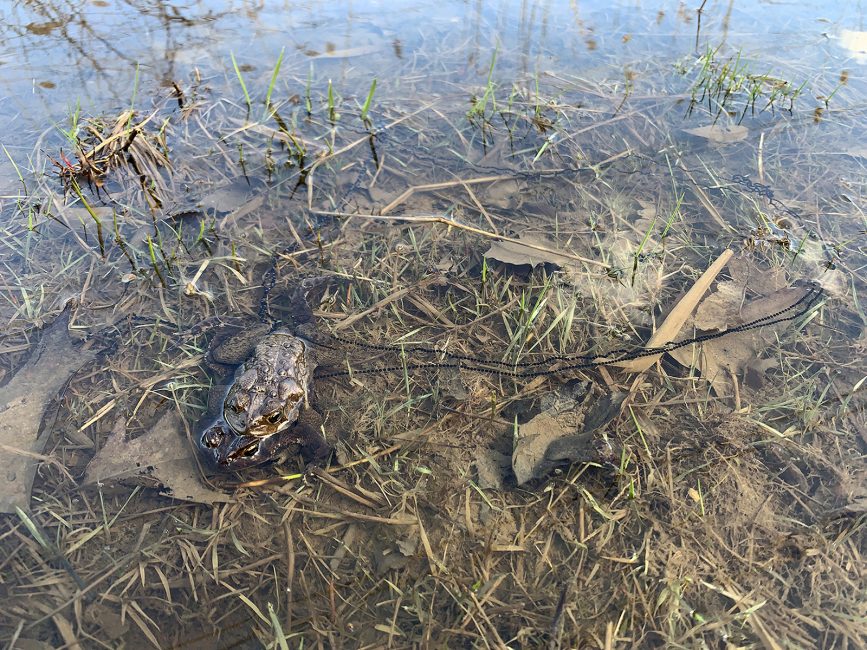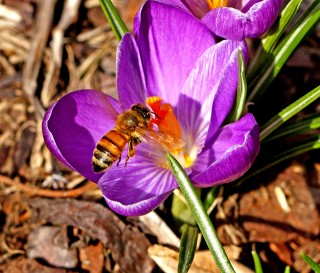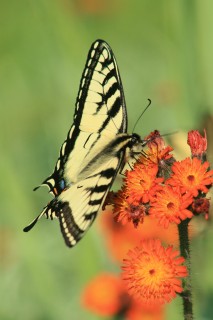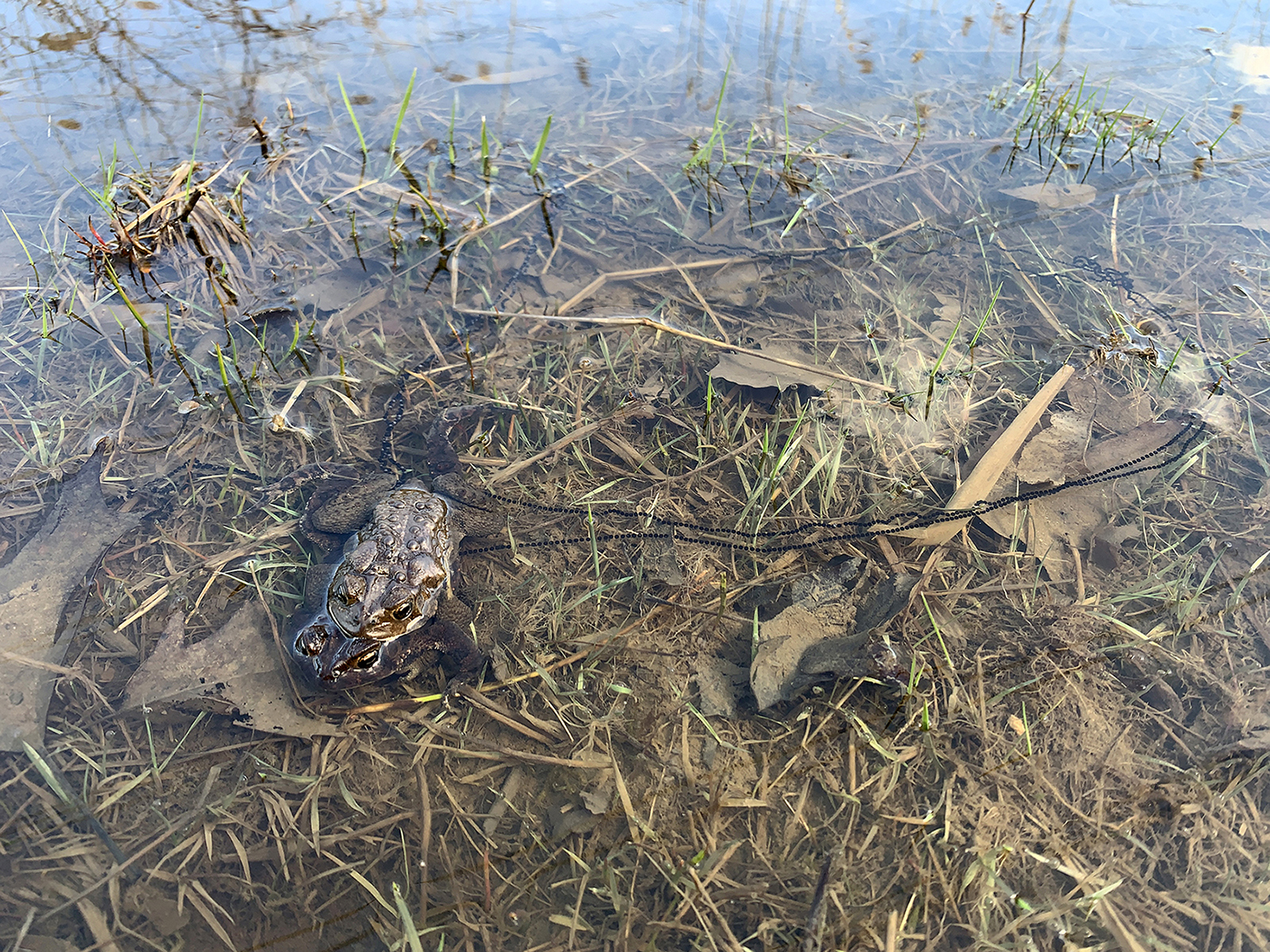
March 12, 2021
Spotting the Signs of Spring
- as seen by -
 Micah Siegel
Micah Siegel
It’s that time of year again. The sun’s arc is creeping steadily higher, the piles of snow on our sidewalks are shrinking, and the morning birdsong includes some voices we haven’t heard since the fall. Spring is on the way!
Not only is this the season for packing away our parkas and switching to iced coffee, it’s also a great opportunity to see who’s taking advantage of the warmer weather.
Last March, I was lucky enough to come across these breeding American toads (Anaxyrus americanus). The position they’re in is called amplexus. The male grasps the female so he can fertilize her eggs as she lays them. A female American toad will lay thousands of eggs at a time in two long, gelatinous strands (above). Within just two weeks, tadpoles will emerge from these eggs, and before summer they will have metamorphosed into tiny toadlets.
When it comes to breeding sites, American toads are quite adaptable. Like other Northeastern amphibians that breed in the spring, a common choice is temporary ponds called vernal pools which are fed by melting snow and underground ice. However, they will make use of other small, still bodies of water so long as there are no fish or other potential predators. I discovered these particular toads in the deep, water-logged tire tracks of a utility vehicle next to some power lines.
If you get the chance to venture outdoors this spring, be on the lookout for who might be sharing the trail. There are many animals just as eager to enjoy the sunshine as we are.
EDITOR’S NOTE: To celebrate Women’s History Month, Wild View is featuring posts by and about women and their contributions to science and conservation throughout March.




Leave a Comment
Kenneth Conley
March 12, 2021 at 7:59 am
What a great post – very cool photo and got to learn something new!
Rodrigo Vargas Yáñez
March 12, 2021 at 2:47 pm
Bien me gusta tanto los anfibios
Kathy
March 12, 2021 at 3:16 pm
Really cool photo! Never seen the egg string before…